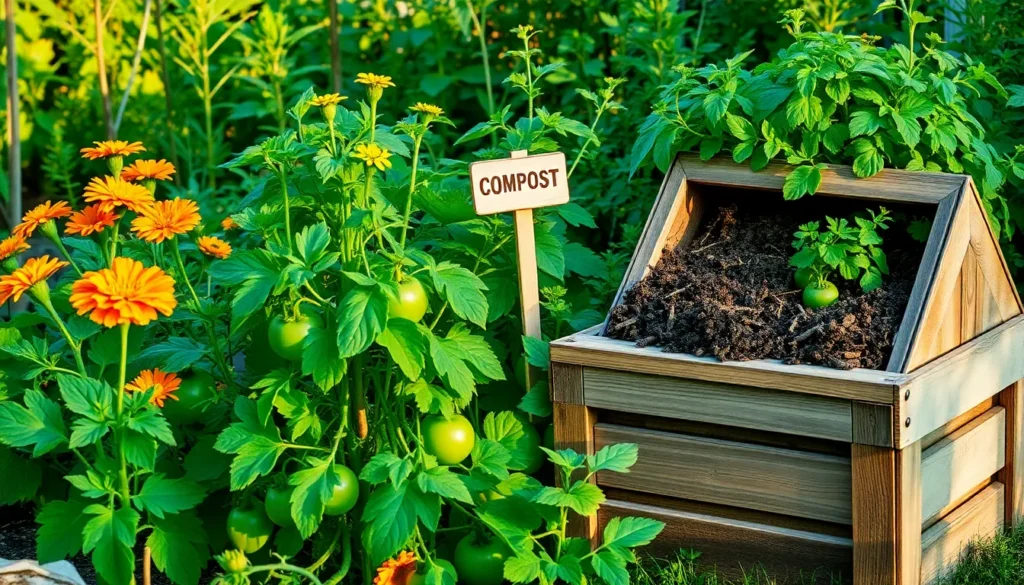Imagine stepping into your garden, where the air is rich with the scent of blooming flowers and ripe vegetables, nurtured by your own hands. Whether you’re just starting out on your gardening journey or have been tending to your patch of earth for years, there’s always something magical about growing your own organic garden. Organic gardening not only provides a haven for your plants but also creates a sanctuary for beneficial insects and microorganisms, enriching the ecosystem right in your backyard. In a world increasingly leaning towards sustainability, mastering organic gardening techniques is becoming an essential skill for gardeners of all levels.
You may have encountered challenges like battling pests without harsh chemicals or boosting soil health naturally. This article will introduce you to seven quick and effective organic gardening hacks that will transform the way you nurture your green space. From simple kitchen scraps that double as potent fertilizers to natural pest repellents that keep your plants healthy, each tip is designed to make organic gardening more approachable and rewarding. So, grab your gardening gloves, and let’s delve into these practical hacks that will support your garden’s health and productivity with minimal effort.
Each hack is chosen not just for its effectiveness but also for its ease of implementation, ensuring that your gardening experience is both rewarding and enjoyable. By the end of this article, you’ll be equipped with new strategies that bring the beauty and bounty of organic gardening right to your fingertips. These insights are crafted to inspire confidence and spur creativity, encouraging you to experiment and personalize your gardening approach. Let’s turn your garden into a thriving, organic oasis with these simple, yet powerful hacks.
Compost Kitchen Scraps Efficiently
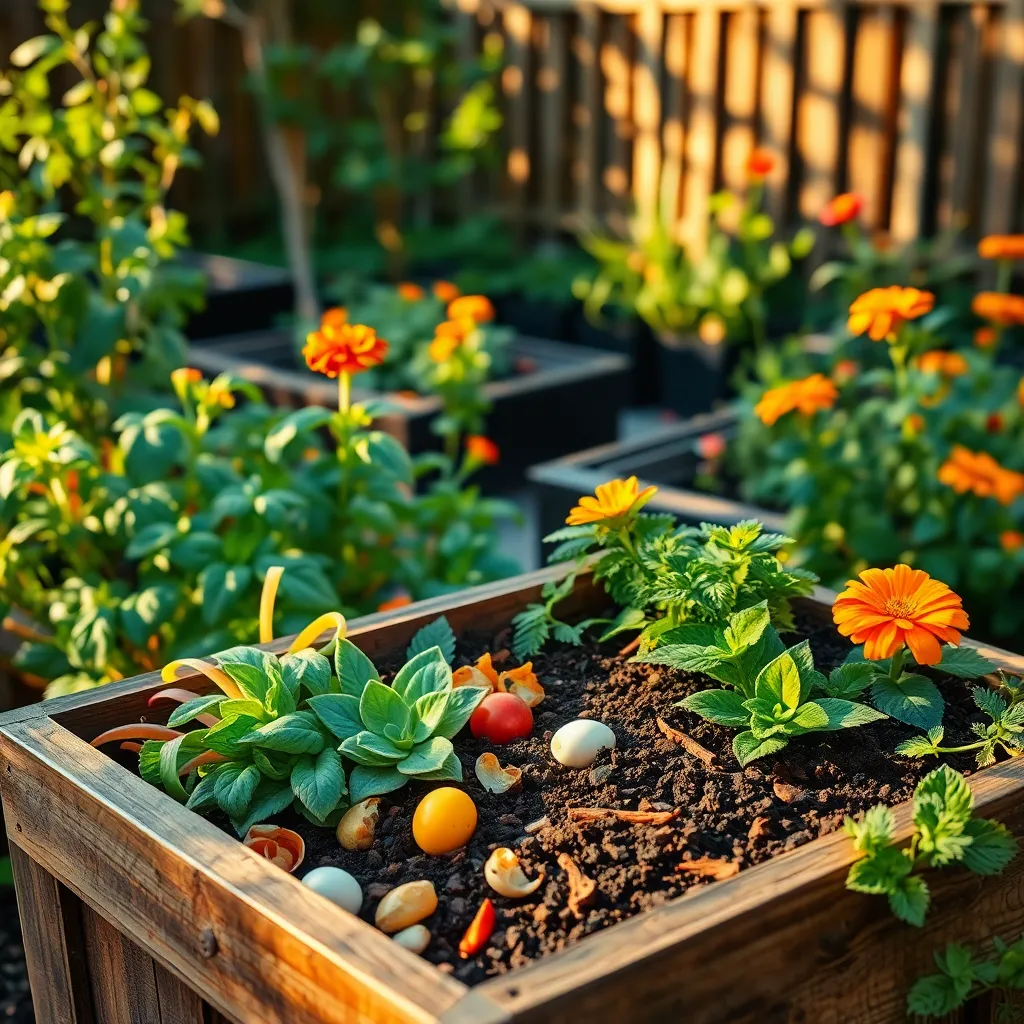
Composting kitchen scraps is an excellent way to reduce waste while enriching your garden soil with essential nutrients. Begin by collecting vegetable peels, fruit scraps, coffee grounds, and eggshells in a dedicated container in your kitchen.
Next, create a balanced compost pile by alternating layers of green materials, such as kitchen scraps, with brown materials like dried leaves or shredded paper. This layering technique helps maintain the right balance of carbon and nitrogen, essential for efficient decomposition.
Maintain moisture in your compost pile by watering it lightly when it appears too dry. Regularly turning the pile with a pitchfork ensures proper aeration, speeding up the decomposition process.
Advanced gardeners can monitor the temperature of the pile with a compost thermometer to ensure it stays between 120 to 160 degrees Fahrenheit for optimal decomposition. Remember to avoid adding meat, dairy, or oily foods to your compost, as they can attract pests and slow down the process.
Attract Beneficial Insects Naturally
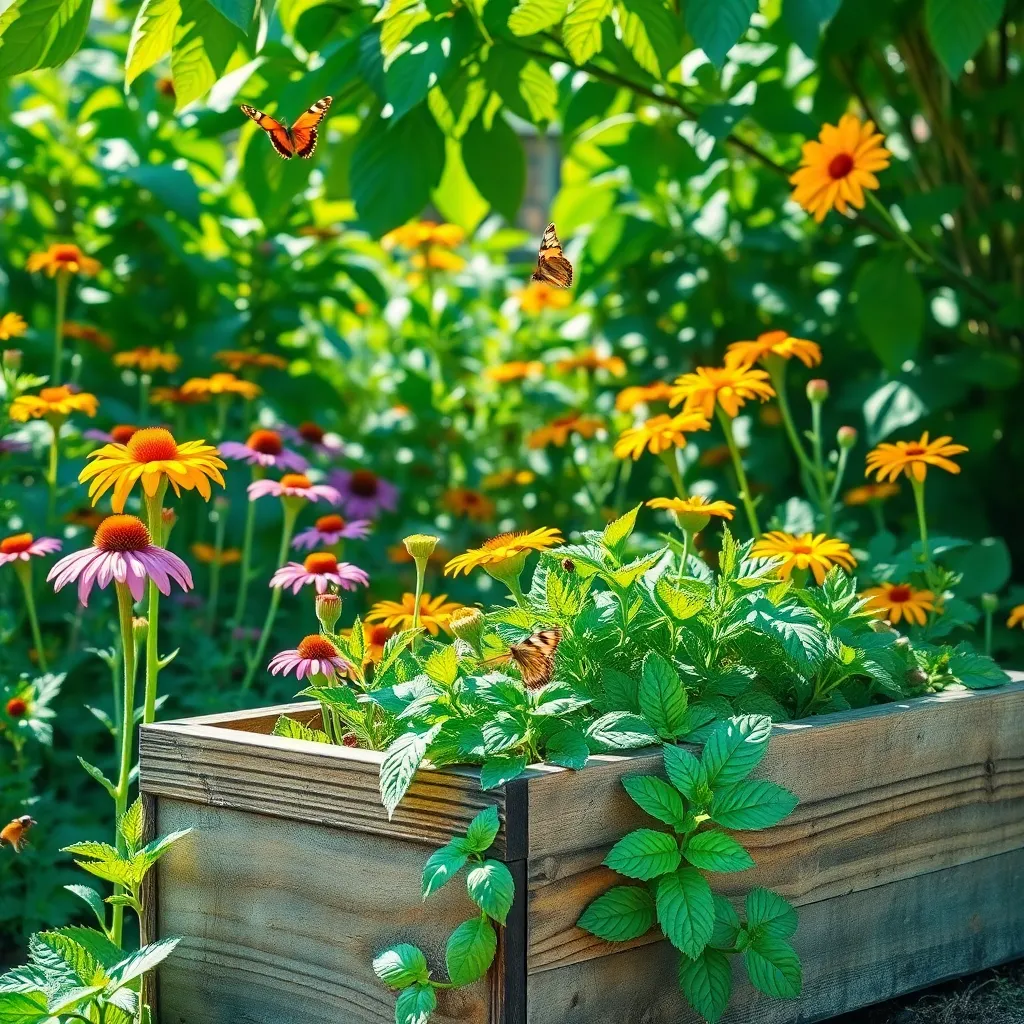
Encouraging beneficial insects in your garden can greatly enhance plant health and productivity. Start by planting a variety of native flowering plants that provide nectar and pollen, which are essential food sources for pollinators like bees and butterflies.
Consider incorporating plants such as yarrow, cosmos, and dill, which attract predatory insects. These beneficial predators, like ladybugs and lacewings, help control pest populations naturally by feeding on aphids and other harmful insects.
Creating a bug-friendly habitat involves more than just planting the right flowers. Provide a shallow dish of water with a few stones in it to give insects a place to drink without drowning, and leave some areas in your garden untidy to offer shelter.
For more advanced gardeners, consider implementing companion planting techniques to attract beneficial insects. For example, plant marigolds and nasturtiums around vegetable beds to naturally deter pests while inviting helpful insects.
Use Epsom Salt for Magnesium Boost
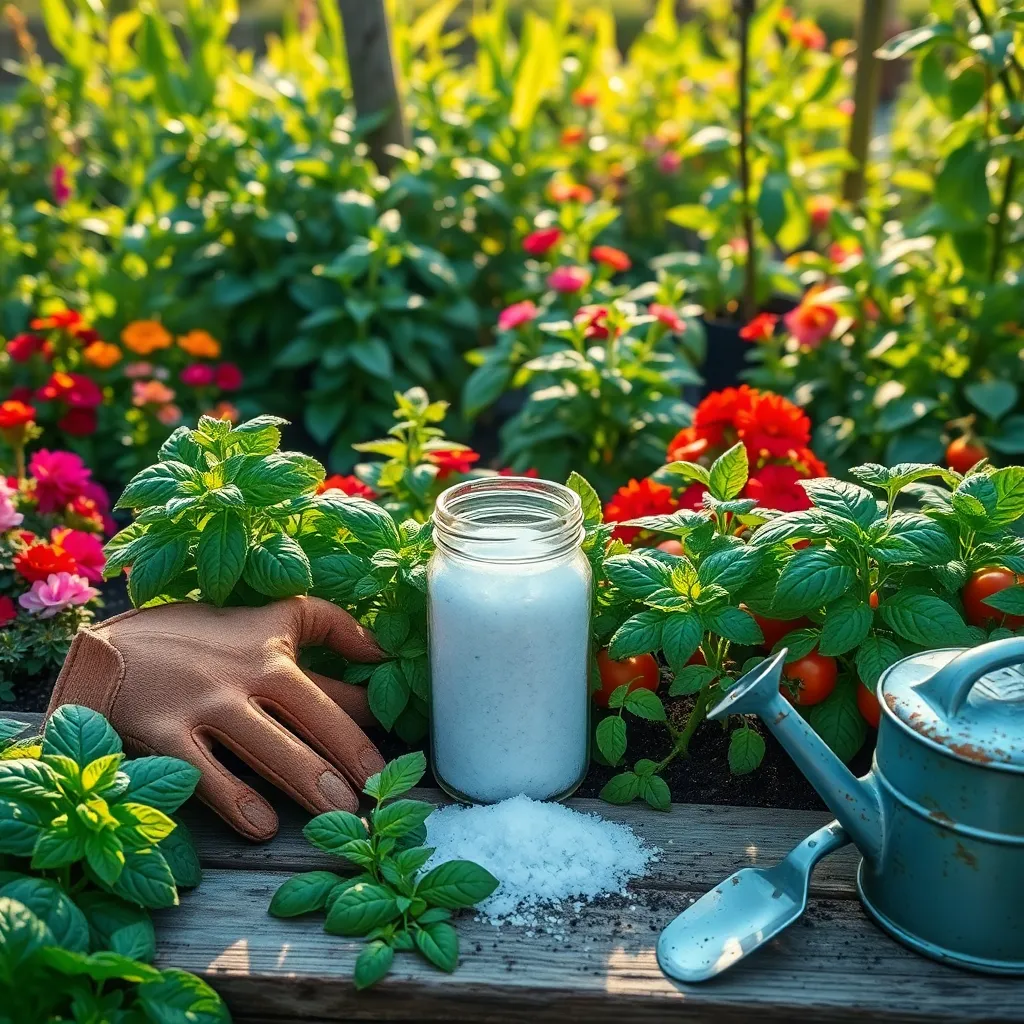
Epsom salt is a fantastic, organic way to provide a magnesium boost to your garden. Magnesium is a crucial nutrient for plants, aiding in photosynthesis and promoting lush, green foliage.
To use Epsom salt in your garden, dissolve it in water at a rate of one tablespoon per gallon. This solution can be applied as a foliar spray or directly to the soil every month to support plant health.
Beginner gardeners will find this method especially useful for plants such as tomatoes, peppers, and roses, which often thrive with a magnesium boost. Simply water the base of these plants with your Epsom salt solution, ensuring the soil is moist but not waterlogged.
For more advanced gardeners, consider using Epsom salt to amend the soil before planting. Mix one cup of Epsom salt into every 100 square feet of soil to enhance magnesium levels, especially in sandy or acidic soils.
- Tip: Always test your soil first to determine magnesium deficiency before regular Epsom salt application.
- Advanced Tip: Incorporate Epsom salt into compost tea to provide an additional nutrient boost during plant feeding.
Create DIY Organic Pest Sprays
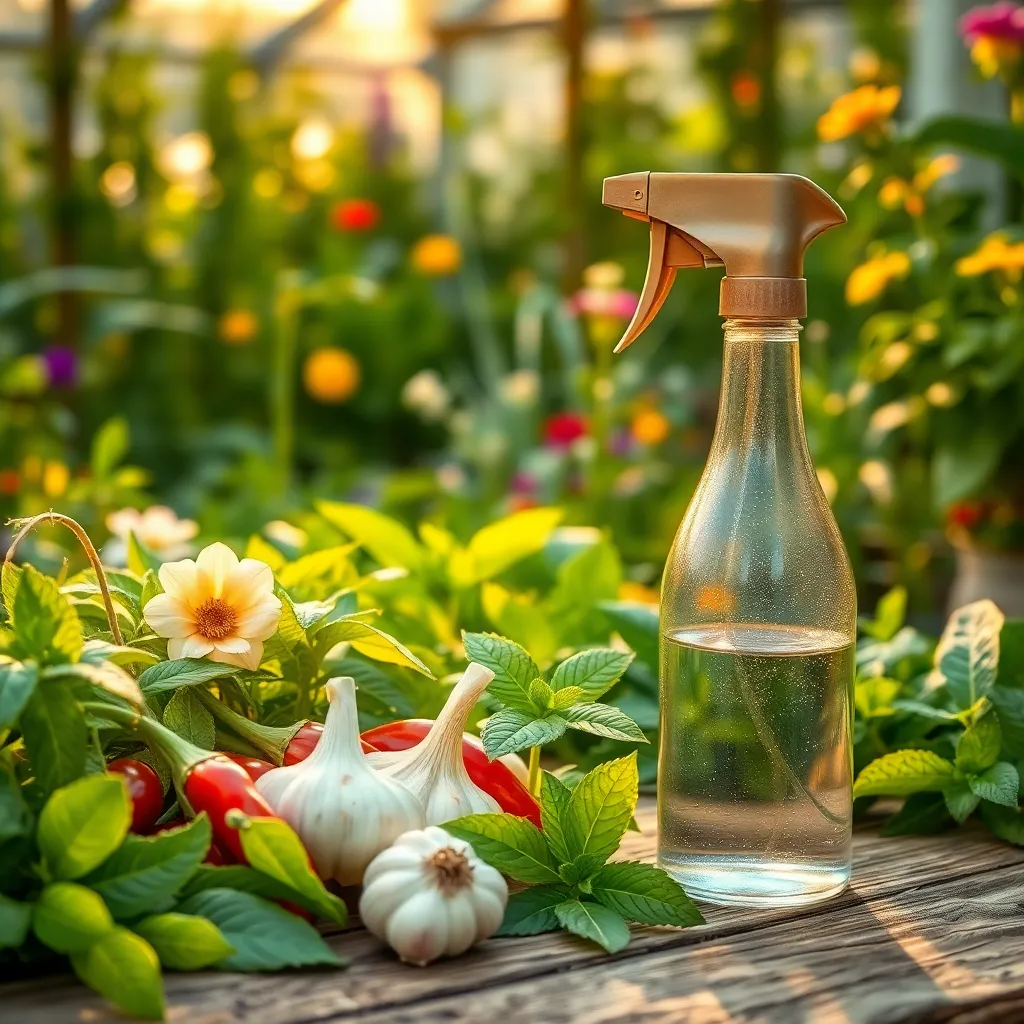
When pests invade your garden, it’s time to take charge with DIY organic pest sprays that are both effective and safe for your plants. Creating your own pest spray allows you to control what goes into your garden, ensuring that you avoid harmful chemicals.
To start, a simple garlic spray can work wonders against many garden pests. Blend two bulbs of garlic with a quart of water, let it steep overnight, and strain it into a spray bottle for easy application.
Another excellent option is using a neem oil spray, which is particularly effective against a wide range of pests like aphids and spider mites. Mix one teaspoon of neem oil with a quart of water and a few drops of mild liquid soap to help the solution adhere to plant surfaces.
For gardeners dealing with fungal issues or stubborn insects, a baking soda spray can be a game-changer. Combine one tablespoon of baking soda with a gallon of water and a teaspoon of liquid soap, then apply it to affected plants weekly.
Experimenting with these organic sprays not only protects your plants but also promotes a healthier ecosystem in your garden. Remember to test any new spray on a small section of your plants first to ensure they respond well.
Implement Companion Planting Strategies
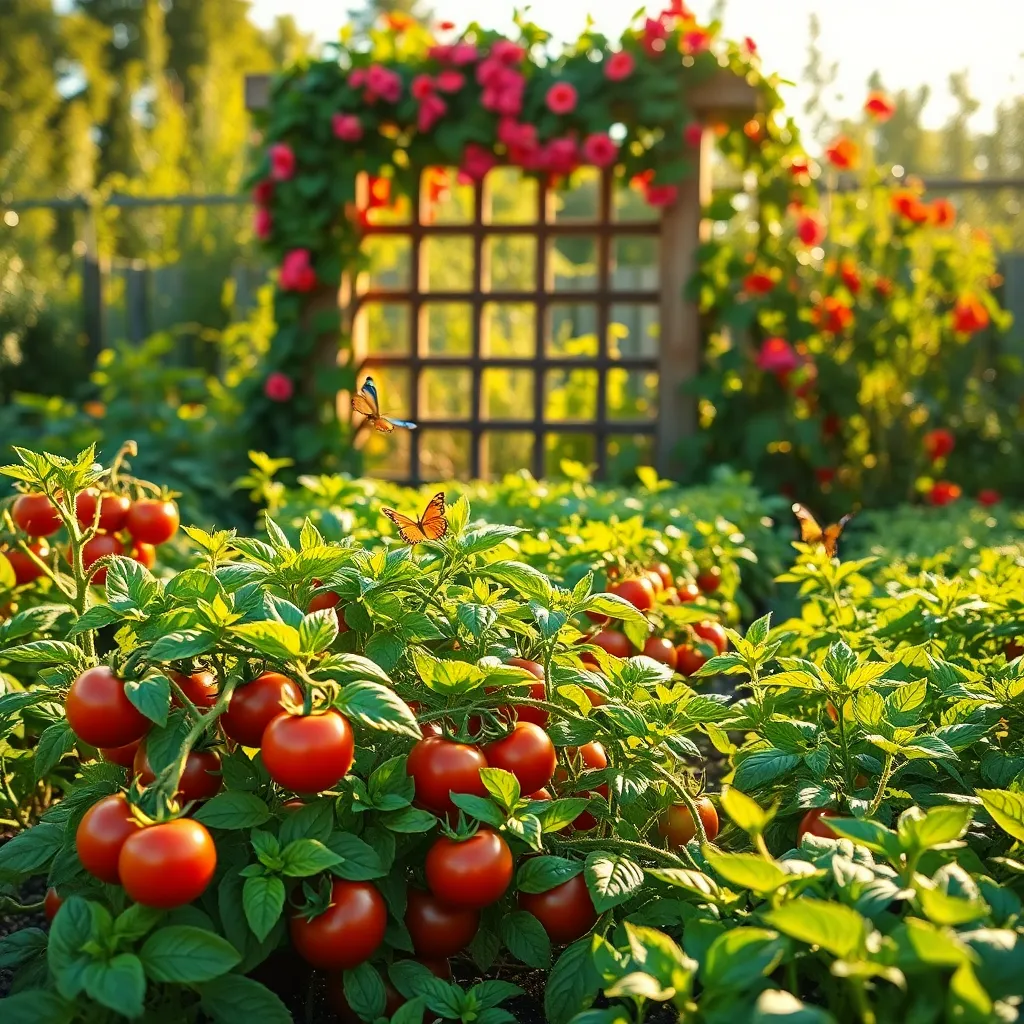
Companion planting is a time-tested strategy that involves growing certain plants together to enhance growth, deter pests, and improve flavor. To get started, consider pairing tomatoes with basil, as basil can help repel insects like aphids and boost tomato flavor.
Another effective pairing is carrots and onions, which can help to ward off each other’s pests due to their distinct scents. Ensure that your soil is well-drained and rich in organic matter to support these root vegetables, and water them deeply but infrequently to encourage strong growth.
For an advanced strategy, try planting marigolds with vegetables like beans or squash to deter nematodes and other soil-borne pests. Marigolds release a chemical into the soil that can reduce nematode populations, so plant them around the perimeter of your vegetable beds for best results.
Integrate companion planting into crop rotation practices for even greater benefits. By rotating crops and their companion plants each season, you can minimize soil depletion and disrupt pest cycles, leading to healthier plants and increased yields.
Mulch with Grass Clippings

Grass clippings can be a fantastic, readily available mulch for your garden beds. They help retain moisture, regulate soil temperature, and suppress weeds, making your gardening efforts more efficient and productive.
To use grass clippings effectively, ensure that the clippings are dry and free of any pesticides or herbicides. Spread a layer about 1 to 2 inches thick around your plants, taking care not to pile them directly against stems to prevent rot.
Beginners will find that using grass clippings as mulch is a cost-effective way to recycle garden waste. For more experienced gardeners, consider alternating layers of grass clippings with other organic materials, like shredded leaves, to enhance nutrient diversity in the soil.
Remember to replenish your grass clippings mulch as it decomposes to maintain its benefits. This natural decomposition process will enrich the soil with nutrients over time, providing long-term fertility to your garden beds.
Harvest Rainwater for Irrigation
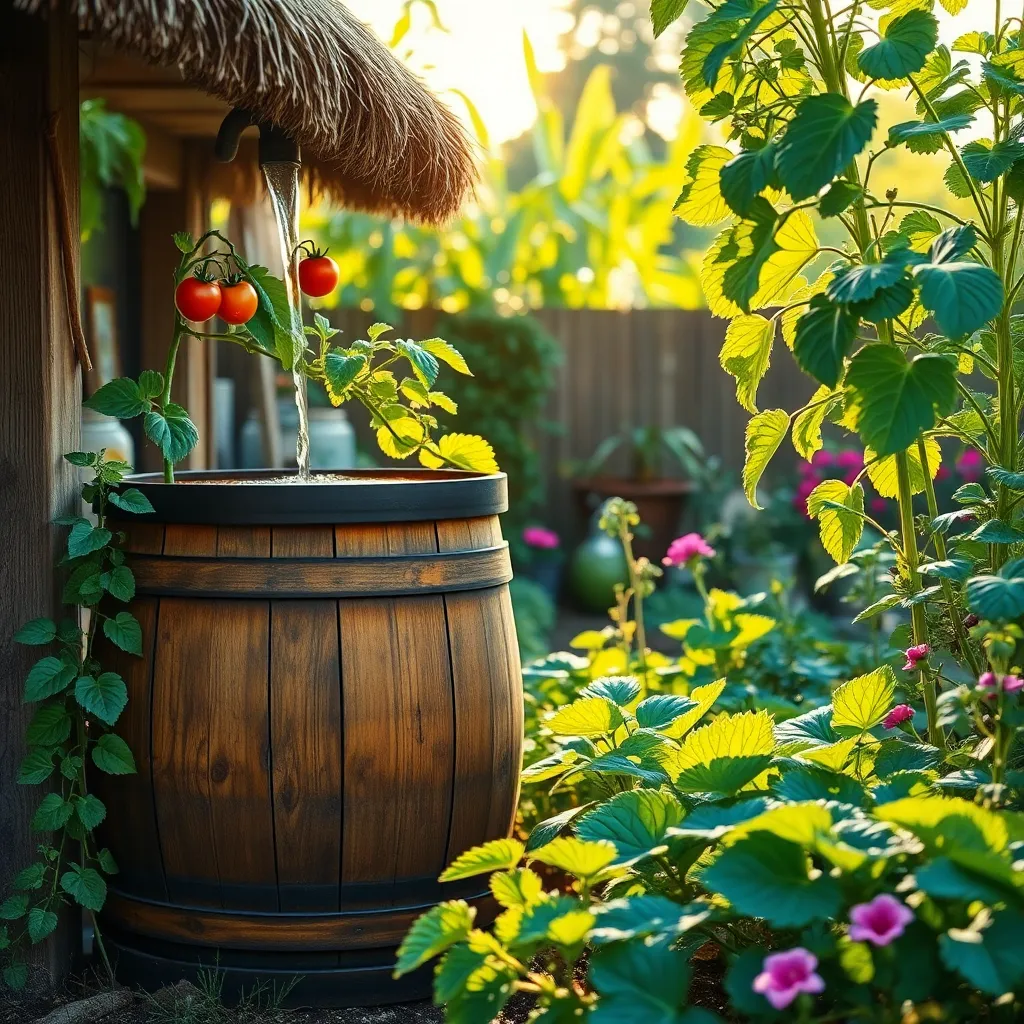
Harvesting rainwater is a simple and effective way to sustainably water your garden. By setting up a basic rain barrel, you can capture rain runoff from your roof, reducing your reliance on municipal water supplies and saving money.
Choose a rain barrel with a capacity that suits your garden’s needs; typically, 50 to 100 gallons is ideal for most home gardens. Position the barrel under a downspout to maximize water collection, and ensure it has a secure lid to prevent debris and mosquito breeding.
Once your rainwater system is in place, use a hose or watering can to distribute water directly to the base of your plants, reducing evaporation and encouraging deep root growth. This method not only conserves water but also provides plants with untreated, natural water free from chlorine and other chemicals found in tap water.
For more advanced gardeners, consider connecting multiple barrels or integrating a drip irrigation system for more efficient water distribution. Regularly check your rain barrel for clogs and clean it annually to maintain optimal water quality and flow.
Conclusion: Growing Success with These Plants
In this enlightening journey through ‘7 Quick Organic Gardening Hacks,’ we’ve unearthed key concepts that beautifully parallel nurturing relationships: 1) Cultivating communication like fertile soil, 2) Embracing patience and persistence akin to seasonal growth, 3) Celebrating individuality as diverse as plant species, 4) Practicing empathy to water the roots of understanding, 5) Setting healthy boundaries similar to garden fences, 6) Fostering trust as the sunlight of connection, and 7) Embracing change with the adaptability of nature’s cycles.
Now, take a moment to reflect on one relationship in your life that could benefit from these insights. Choose one hack to implement today—whether it’s initiating a heartfelt conversation or setting a new boundary—and watch your relationship flourish.
As you embark on this nurturing path, we invite you to bookmark this article. Having these strategies at your fingertips will empower you to revisit and reinforce your efforts whenever needed. Remember, like a well-tended garden, relationships thrive with care and dedication. By planting these seeds of wisdom, you are setting the stage for a future of flourishing connections. Here’s to your journey of growth and lasting relationship success!

